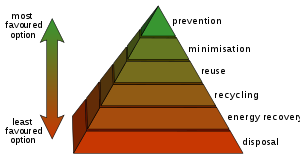Blog Archive
-
▼
2011
(44)
-
▼
Januari
(38)
- Miseri danau Berwarna Neonv
- Lagu Indonesia raya Lagu Terbaik di Dunia
- Lingkaran tanaman
- Perubahan Nama AcTionTen
- Nano-Satelit Buatan Mahasiswa Indonesia Satelit m...
- Sniper Produksi Indonesia Mampu Menembus Tank
- Made in Indonesia
- Bahasa Indonesia Akan Menjadi Bahasa Peradaban Dun...
- Bahasa Indonesia Akan Menjadi Bahasa Internasional ?
- Sansevieria, Tanaman Hias Penyerap Ratusan Jenis R...
- NASA- Badai Matahari 2013 Bisa Jadi Bencana
- NASA Membuat Prototipe Solar Shield
- HUTAN HUJAN TROPIS DI INDONESIA & USAHA PELESTARIA...
- Dampak Kerusakan Pengambilan Air Tanah Berlebih di...
- Apa yang Kita Akan Lakukan Bila Bumi Kita Rusak ?
- 7 Keajaiban Dunia ( 2010 )
- 10 Bencana Alam Terbesar di Dunia
- 20 Fakta Mengerikan Mengenai Masa Depan Kita dan Bumi
- 10 Ways to Go Green and Save Green
- 10 Tempat Terindah di Indonesia
- Masa Depan Bumi Kita dan Fakta Mengerikanya
- Dampak Global Warming bagi Bumi
- 50 Tips Untuk Mencegah Global Warming
- Hotel Anti Bencana
- Kalpataru
- SELAMAT DATANG DI KOTA BALIKPAPAN.. "PINTU GERBANG...
- Adipura
- Pemanasan Global
- Fenomena Lubang Ozon
- Efek Rumah Kaca
- Waste hierarchy
- Akselerasi
- Sekolah Berbudaya Lingkungan
- Hydroponik
- Program Botanical Garden
- FUSSAL (Forum Siswa Sadar Lingkungan)
- Pendidikan Kebersihan dan Lingkungan Hidup
- Wawasan Wiyata Mandala
-
▼
Januari
(38)
Waste hierarchy
 The waste hierarchy refers to the 3Rs of reduce, reuse and recycle, which classify waste management strategies
The waste hierarchy refers to the 3Rs of reduce, reuse and recycle, which classify waste management strategies according to their desirability. The 3Rs are meant to be a hierarchy, in order of importance.However in Europe the waste hierarchy has 5 steps: reduce, reuse, recycle, recovery and disposal.
The waste hierarchy has taken many forms over the past decade, but the basic concept has remained the cornerstone of most waste minimisation strategies. The aim of the waste hierarchy is to extract the maximum practical benefits from products and to generate the minimum amount of waste.
Some waste management experts have recently incorporated a 'fourth R': "Re-think", with the implied meaning that the present system may have fundamental flaws, and that a thoroughly effective system of waste management may need an entirely new way of looking at waste. Source reduction involves efforts to reduce hazardous waste and other materials by modifying industrial production. Source reduction methods involve changes in manufacturing technology, raw material inputs, and product formulation. At times, the term "pollution prevention" may refer to source reduction.
Another method of source reduction is to increase incentives for recycling. Many communities in the United States are implementing variable rate pricing for waste disposal (also known as Pay As You Throw - PAYT) which has been effective in reducing the size of the municipal waste stream.
Source reduction is typically measured by efficiencies and cutbacks in waste. Toxics use reduction is a more controversial approach to source reduction that targets and measures reductions in the upstream use of toxic materials. Toxics use reduction emphasizes the more preventive aspects of source reduction but, due to its emphasis on toxic chemical inputs, has been opposed more vigorously by chemical manufacturers. Toxics use reduction programs have been set up by legislation in some states, e.g., Massachusetts, New Jersey and Oregon.
Rethinking Waste
The 3Rs are categories at the top of our disposal options. They include a variety of initiatives for disposing of discards. Generally, options lowest on the list are least desirable.
Reduce - to buy less and use less. Incorporates common sense ideas like turning off the lights, rain barrels, and taking shorter showers, but also plays a part in Composting/Grasscycling (transportation energy is reduced), low-flow toilets, and programmable thermostats. Includes the terms Re-think, Precycle, Carpool, Efficient, and Environmental Footprint.
Reuse - elements of the discarded item are used again. Initiatives include Hand-Me-Downs, Garage Sales, Quilting, Travel Mugs, and Composting (nutrients). Includes the terms Laundry, Repair, Regift, and Upcycle.
Recycle - discards are separated into materials that may be incorporated into new products. This is different from Reuse in that energy is used to change the physical properties of the material. Initiatives include Composting, Beverage Container Deposits and buying products with a high content of post-consumer material.
Generate - capturing useful material for waste to energy programs. Includes Methane Collection, Gasification and Digestion, and the term Recover.
Incinerate - high temperature destruction of material. Differs from Gasification in that oxygen is used; differs from burning in that high temperatures consume material efficiently and emissions are controlled.
Devastate - to discard into the natural environment, or to "trash" the planet. Includes Litter, Burn Barrels, Unnecessary Vehicle Idling, and Dumping discards onto land or into water.
Langganan:
Posting Komentar (Atom)
About Me
- AcTionTen
0 komentar:
Posting Komentar